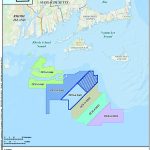With the recent signing of Senate Bill 100, Gov. Jerry Brown and the State of California have taken a historic leap forward for clean energy.
Recent commercial advancements in floating technology mean California’s offshore wind resource is an awakening goliath. By including offshore wind as a key resource to meet its new goal, California will grow local businesses, create thousands of good jobs, attract billions of dollars in private investment, and deliver not only clean but affordable electricity to California’s grid.
The National Renewable Energy Laboratory (NREL) estimates the state’s net offshore wind capacity at 112 GW with a net annual energy potential of 392 TWh, even after excluding areas for military, environmental, and other uses. To put this in context, California’s entire 2017 electricity generation from both in-state and imported power sources was 292 TWh — 100 TW/h less than the state’s offshore wind energy potential.

Jerry Brown
Although the Pacific Ocean drops off more steeply than the Atlantic — making fixed foundation turbines impractical — floating turbine technology is advancing rapidly. Already, the world’s first commercial-scale floating wind farm is delivering electricity off the coast of Scotland, at an unprecedented capacity factor of 65 percent.
The September bill signing is especially exciting because of its scale. Experience has shown that bold state policy goals are key to establishing an offshore wind development pipeline over time. This unlocks even greater private sector investment in regional port infrastructure, manufacturing and other supply chain jobs, all of which drive costs down further.
So far, offshore wind activity in the United States has focused mainly on the East Coast. States from Massachusetts to South Carolina have set offshore wind targets totaling almost 9 GW by the 2030s, and prices have been falling dramatically: two years ago, Rhode Island’s Block Island Wind Farm came online at a price of 22 cents per kilowatt hour (kWh). Last year, Maryland’s two offshore wind farm contracts came in at 13.4 cents per kWh, a drop of almost 40 percent in one year. And just last month, Massachusetts announced a levelized electricity price of 6.5 cents per kWh, less than 50 percent of the Maryland price announced just a year before.
Now, SB 100 positions the Golden State to reap the benefits of this growing industry. California’s offshore wind resource is the perfect balance to the state’s massive solar program, because it provides peak power in the winter and in the late afternoon/early evening, when electricity demand is high and solar production is less strong.
The Business Network for Offshore Wind is the only national 501(c)3 non-profit dedicated to growing the offshore wind industry and its supply chain.
MORE INFO www.offshorewindus.org



































